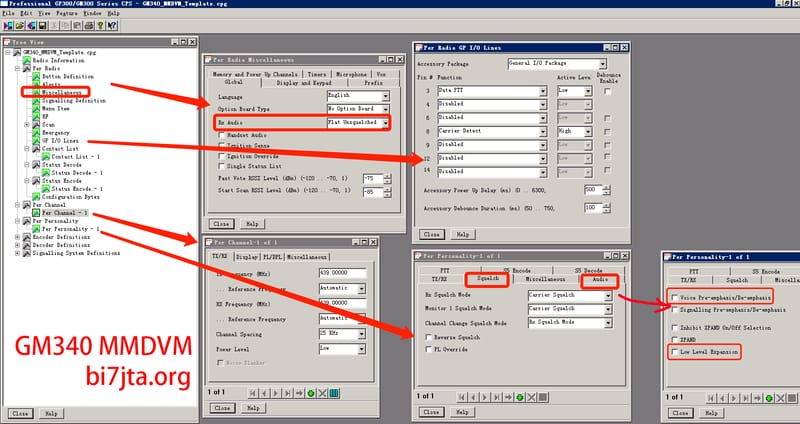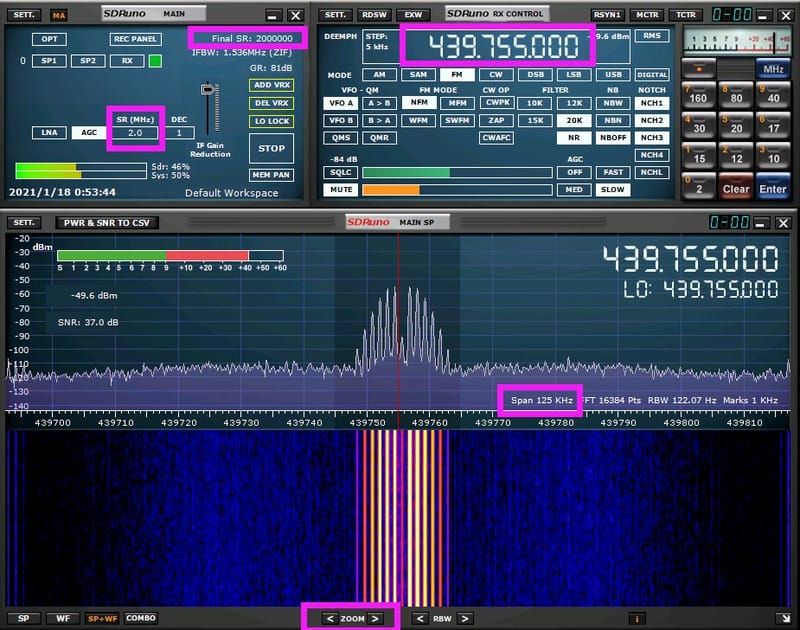Dear OMs and passionates, I’m going to write something about my last month of experiments with MMDVM in C4FM. I spent a lot of time to fix the problems, and I wish that this article could be useful to the MMDVM community.
Why did I decide to build a C4FM repeater?
Cm340 Programming Software Download
Program to change a model number and re-initialize much Motorola radios. Program for R1225 repeater, M1225 mobile, P1225 portable radios. Astro RSS vre R09.03.00. RSS for Astro mobile radios R01.10.01. CPS for CP040, CP140, CP160, CP180, CM140, CM160 R02.04. CPS for Profissional series R06.04.00AA. Program to convert 2 or 8 ch GP300 to 16 ch. This programming cable is designed for quick and easy programming of Motorola CM340 radio. The power supply is done over the USB interface. The internal converter circuit board (interface) mounted inside the USB shell. This cable does not include any manuals or instructions for use. FTDI USB Programming Cable for Motorola CM340 CM360 Desktrac EM200. The factory programming software title that supports these radio models is. What You Need To Program GP340/GP344/GM340 Series Radios Programming the Motorola GP340 (or GP300 Professional) series radios is relatively straighforward. But there are some things you will need to do so. About Press Copyright Contact us Creators Advertise Developers Terms Privacy Policy & Safety How YouTube works Test new features Press Copyright Contact us Creators. Motorola ENLN4115 is the CPS programming software for the Motorola GP320, GP330, GP340, GP360, GP380, GP344/R, GP366/R, GP388/R two way radios. We have started a Facebook group to hopefully support owners of the now discontinued Motorola GP340/HT750 series radios: https://www.facebook.com/groups/84525/.
Because I bought a used Yaesu FT2-D and I want to use it! I’m passionates of digital modulations and I wanted to play with this new mode.
In my region there are a lot of DMR repeaters and users, but only few C4FM nodes. In my province, actually there are not nodes yet, but I know there are OMs with C4FM radios which are waiting for nodes!
Which are the expectations of this project?
Funny and low cost compared to a commercial Yaesu repeater. Moreover, I don’t like the “plug&play” solutions 🙂
Materials/equipment needed
- PC or raspberry
- Two radios with 9k6 packet capability
- Power supply
- UHF cavity duplexer
- Arduindo due
- Arduino interface
- Internet connection
- Antenna system
Let’s concentrate on the radios.
Band choice
I want to run my repeater together with my VHF APRS Digi/I-Gate, so I necessarly have to use 70cm band for C4FM. I’ll use the same antenna (X-300, collinear) with a V/U duplexer.
Radio choice
For the first experiments, I used an old Alinco ALD-24E, modified for 9k6 packet radio. I used it for my packet node for ten years, but the 70cm section was not working, so I did some C4FM tests on 2m with very good results! I used MMVM with “low cost” interface by IZ5IGB and it was very easy to tune the levels and do the first tests.
As I wrote before, I have an APRS digi running at 144.800, so I must move my MMDVM repeater to 70cm, so I started to search on the internet.
After some search, I realized that the most favourite radios are the Motorola GM340, but it’s difficult to find the UHF version, and the prices are quite high for my budget. So I started to find an alternative radio, and I cathed this article: https://www.grupporadiofirenze.net/2017/05/25/motorola-gm350-4-canali-vs-mmdvm/
The GM350 cost about half the price of a GM340, so I quickly bought one from ebay.
I received the radio and applied the modification of the article.
Cm340 Programming Software Downloads
I used the 1Kohm resistors and the injection point described in the last part of the article, but the first tests were very unsatisfying…
First Tests Results: coupling capacitor issue
For the first tests I used the “low cost interface” by IZ5IGB described in the guide “MMVM for dummies” (see: http://ik1whn.com/mmdvm/MmdvmForDummies.pdf )
Before transmitting, I run MMDVMCal and I immidiately noted a strange behaviour: The TX Spectrum moved up and down varying the TX Level (see the following video )
I wrote the first (of a long series!) email to Graziano IZ5IGB and he suggested to check the decoupling capacitor.
So, I noticed that the schematic reported in “MMVM for Dummies” was old, and the new version (1.4) has a decoupling capacitor on the trimmer cursor!
For the last interface schematic (rev. 1.3), see https://www.grupporadiofirenze.net/wp-content/uploads/2017/11/Low-Cost-ZUM-for-Arduino-2-V.-1.4-By-IZ5IGB.pdf
I applied a 47uF electrolytic coupling capacitor to my interface (with the positive pole towards the radio) and the spectrum became stable!
I put the capacitor inside the radio (see the following picture):
It’s possible to check the correct decoupling in this way:
1) Put the radio in TX with the audio TX line not connected
2) Take note of the carrier frequency
3) Run MMDVMCal and verify that the spectrum doesn’t move and the center frequency is the same of point 1)
Next Step: TX level calibration
I run MMDVMCal with the Low Cost interface, then I pushed “D” (DMR deviation Mode) then “Space” (TX toggle). With “t” and “T” I can adjust the TX level by Software. The TX trimmer was at half level at the beginning.
I reached the Bessel Null (optimum modulation level) with TX trimmer at maximum output, and the Software output level at 80%.

I put TXLevel=80 in my MMDVM.ini file, and I run MMDVM in C4FM mode, but I noticed the warning message “DAC has overflowed” when the Motorola was transmitting.
I wrote again to Graziano IZ5IGB and I asked him if he encountered the same problem, but he answered that he doesn’t use the C4FM, and in DMR was OK.
The “DAC Overflow” issue: FM deviation in DMR/DSTAR/C4FM
In order to understand the overflow, the FM deviation for each mode must be taken into account:
- D-STAR: ~1,2KHz
- DMR: ~2,75KHz
- C4FM: ~4,5KHz
The MMDVMCal works in DMR mode. Once the optimal TXLevel has been found and declared in MMDVM.ini, the Software automatically change the output level according to the modulation implemented. So, in case of C4FM, the output level is automatically set at twice the level previously found by MMDVMCal in DMR mode.
The bad news is that MMDVM, in C4FM, gives the warning “DAC has overflow” if the TXlevel is greater than 60% (whic is a 120% in C4FM, effectiverly), although the TX trimpot is at maximum level.
In order to avoid the ADC overflow, you should reach the Bessel Null within the 60% of output level. How to do this?

Solution 1: External Amplifier
One possible solution could be an audio amplifier to double the arduino output level.
For starting, we can put Gain=2. The opamp should be powered with V>8V in order to reach the desired otuput level, so it cannot be powerd directly by Arduino (5V).
I decided to use the +12V of our shack, so I tried this schematic:
The components values are the following:
- C1: 10uF, 16V – Electrolytic
- C2: 100nF, ceramic
- C3: 33uF, 16V – Electrolytic
- C4: 100nF, ceramic
- R1: 22Kohm, 1/4W
- R2: 47Kohm, 1/4W
- R3,R4: 10Kohm, 1/4W
- IC1: TL081
I tried the circuit on a bread board:
Note: some components could be different from the schematic, it’s for example only.
I used a trimmer, but you can leave a fixed resitor.
I put my opamp between the MMDVM and the radio and run again MMDVMCal, but…I couldn’t feel the effect of the amplification. Something was going wrong, so I exchanged a pair of emails with my friend Graziano. He suggested me to check the TX deviation limit in the calibration menu of my motorola.
TX deviation limit adjustment: connection from PC to the radio
It was necessary to connect to the radio, so I used a commercial USB-TTL adapter and a 1N4148 diode between RX and TX. Here below there is the schematic:
I used a short piece of LAN cable to connect to the RJ45 in front of the radio.
I downloaded Motorola CPS software and installed on a Windows 7 32 bit (it doesn’t work on 64bit!), configured the USB-TTL adapter as COM4 (CPS manages only COM from 1 to 4) and entered in TX aligments–> TX Deviation Limits. Here below the situation:
I moved to maximum the Deviation Limit of the frequency 431.625 (I’m interested only to this frequency range).

Once the radio was re-programmed, I run MMDVMCal and…finally I got the Bessel Null with TXLevel=45%!
I tested my hotspot with this configuration and was perfect.
The suitable version of GM350 for C4FM
When I downloaded the Motorola Service Manual of the radio, finally I discovered that there are different versions of GM350. In particular, there is the 20/25KHz that is fine.
I ordered and tested this radio and it’s OK also in C4FM without ant external amplifier.
So, I should have more patient before buying the first radio…
Here below I put in red the correct version of GM350 for C4FM:
Conclusions:
- If you want to buy a Motorola radio for your hotspot/repeater, take care of the P/N, wich distinguish different versions of the same radio. Some versions could not be suitable for your purpose.
- If you prefer a “plug&play”, safe solution for your C4FM hotspot/repeater, then choose a GM340 or a GM350 version 20/25KHz (M08RHE6AA2AN).
- If your’ not implementing C4FM, but only DMR or D-STAR, then also the 12.5 KHz version of GM350 should be OK (M08RHE4AA2AN)
- If you want to use a 12.5 KHz version of GM350 for C4FM, then you have to build a simple opamp amplifier with gain=2, and you have to put at maximum level the “tx deviation limit of you radio (through the PC programming interface).
Special Thanks:
I want to say a special thanks to Graziano IZ5IGB that spent his time to support me during the Motorola alingment and during all the activities.
He revealed me some tricks that were fundamental for my experiments!